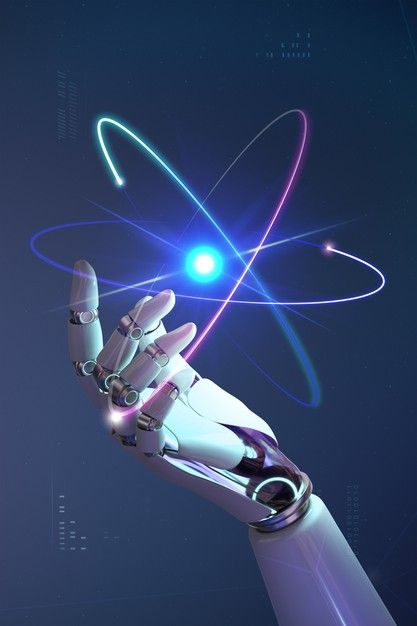Blue Artificial Intelligence: A Complete Guide for 2025
Introduction
In the ever-evolving world of technology, Blue Artificial Intelligence has emerged as one of the most innovative approaches in the AI landscape. Businesses, researchers, and tech enthusiasts are increasingly curious about how this advanced technology can revolutionize industries. But what exactly is Blue AI, how does it work, and why is it considered so important for the future of automation and smart systems?
This guide explores Blue Artificial Intelligence, its meaning, applications, benefits, challenges, and the way it’s shaping tomorrow’s digital transformation.
What is Blue Artificial Intelligence?
Blue Artificial Intelligence refers to a next-generation AI system that emphasizes trustworthiness, reliability, and scalability. The term “blue” symbolizes clarity, transparency, and innovation—qualities that are essential in modern AI systems. Unlike traditional AI, which often faces criticism regarding bias, data privacy, and limited transparency, Blue AI aims to solve these issues by focusing on ethical AI practices and intelligent automation.
In simple words, Blue AI is a framework designed to bring more trust, fairness, and accountability to artificial intelligence applications.
How Does Blue Artificial Intelligence Work?
The power of Blue AI comes from combining advanced technologies and methodologies:
-
Machine Learning (ML): Blue AI uses ML models to adapt and improve based on data over time.
-
Explainable AI (XAI): Provides clear reasoning behind AI decisions to ensure transparency.
-
Cloud Integration: Many Blue AI systems are built on scalable cloud platforms, ensuring accessibility and efficiency.
-
Data Ethics: Strict measures are taken to ensure user privacy and ethical data handling.
-
Cognitive Automation: Blue AI focuses on automating complex tasks that require decision-making, not just simple repetition.
Key Applications of Blue Artificial Intelligence
The versatility of Blue Artificial Intelligence makes it useful in multiple sectors. Some of the most prominent applications include:
1. Healthcare
-
AI-assisted diagnosis with transparent explanations.
-
Patient data monitoring with a focus on privacy.
-
Predictive analysis for early detection of diseases.
2. Finance
-
Fraud detection with real-time alerts.
-
Transparent decision-making in credit scoring.
-
Enhanced customer support through intelligent chatbots.
3. Education
-
Personalized learning experiences.
-
AI tools that help teachers analyze student performance.
-
Ethical data management in e-learning systems.
4. Business Operations
-
Smarter automation of workflows.
-
Data-driven decision-making without bias.
-
Improved supply chain and logistics optimization.
5. Cybersecurity
-
Threat detection with explainable reports.
-
Transparent risk analysis for enterprises.
-
AI-driven prevention of phishing and malware attacks.
Benefits of Blue Artificial Intelligence
The adoption of Blue Artificial Intelligence brings multiple advantages to both organizations and individuals:
-
Transparency: Users understand how decisions are made.
-
Trustworthiness: Reliable data handling and ethical practices.
-
Efficiency: Faster and more accurate automation of complex processes.
-
Scalability: Can adapt to both small businesses and large enterprises.
-
Innovation: Opens new opportunities for advanced AI-driven solutions.
Challenges of Blue Artificial Intelligence
Despite its benefits, Blue Artificial Intelligence comes with its own set of challenges:
-
High Costs: Initial investment in Blue AI systems can be expensive.
-
Skill Gap: Lack of professionals trained in ethical and explainable AI.
-
Data Privacy Concerns: Maintaining user trust requires constant improvements.
-
Integration Issues: Businesses may struggle to integrate Blue AI with existing systems.
Blue Artificial Intelligence vs Traditional AI
| Feature | Traditional AI | Blue Artificial Intelligence |
|---|---|---|
| Transparency | Limited | High (explainable AI) |
| Bias Issues | Higher risk | Reduced bias with ethical frameworks |
| Scalability | Moderate | Highly scalable |
| Trust Level | Lower | Higher due to ethical design |
| Data Handling | Less regulated | Focus on privacy and ethics |
Future of Blue Artificial Intelligence
The future of Blue AI looks bright as industries move toward ethical AI adoption. Some expected trends include:
-
AI Governance: Businesses adopting Blue AI will have stricter compliance with ethical standards.
-
Integration with IoT: Smarter, more transparent AI-driven devices.
-
Global Expansion: More countries adopting ethical AI frameworks.
-
Human-AI Collaboration: Blue AI will work alongside humans rather than replace them.
-
Sustainable AI Practices: Energy-efficient models to reduce carbon footprints.
Why Businesses Should Consider Blue Artificial Intelligence
For companies aiming to stay ahead in the digital era, investing in Blue Artificial Intelligence can offer:
-
Competitive advantage.
-
Better customer trust.
-
Enhanced innovation.
-
Long-term sustainability.
It ensures that businesses not only grow but also build credibility by adopting AI that is transparent and trustworthy.
Final Thoughts
Blue Artificial Intelligence represents the future of ethical, transparent, and scalable AI. By focusing on trust and innovation, it provides businesses and individuals with smarter, fairer, and more efficient systems.
As industries continue to integrate AI, Blue AI stands out as a solution that bridges the gap between advanced technology and human trust. The journey of Blue Artificial Intelligence is just beginning, and it will continue to shape the digital world in 2025 and beyond.



